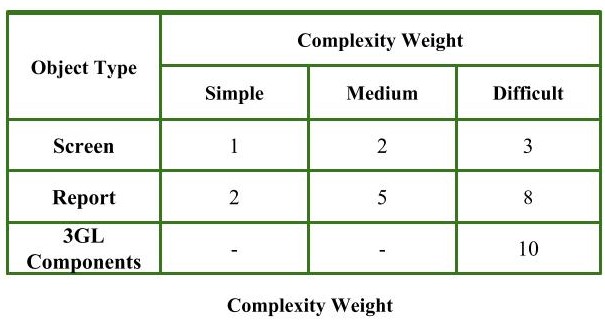Application Composition Estimation Model (COCOMO II | Stage 1) – Software Engineering
Last Updated :
02 Jan, 2024
Application Composition Estimation Model allows one to estimate the cost, and effort at stage 1 of the COCOMO II Model. In this model, size is first estimated using Object Points. Object Points are easy to identify and count. Object Points define screen, reports, and third-generation (3GL) modules as objects. Object Point estimation is a new size estimation technique but it is well suited in Application Composition Sector.
Estimation of Efforts
The following steps are taken to estimate the effort to develop a project:

Application Composition Estimation Model
1. Access Object Counts
Estimate the number of screens, reports and 3GL components that will comprise this application.
2. Classify Complexity Levels of Each Object
We have to classify each object instance into simple, medium and difficult complexity level depending on values of its characteristics. Complexity levels are assigned according to the given table.


3. Assign Complexity Weights to Each Object
The weights are used for three object types i.e, screens, reports and 3GL components. Complexity weight are assigned according to object’s complexity level using following table.

4. Determine Object Points
Add all the weighted object instances to get one number and this is known as object point count.
Object Point = Sigma (number of object instances) * (Complexity weight of each object instance)
5. Compute New Object Points (NOP)
We have to estimate the %reuse to be achieved in a project. Depending on %reuse
NOP = [(object points) * (100 – % reuse)] / 100
NOP are the object point that will need to be developed and differ from the object point count because there may be reuse of some object instance in project.
6. Calculate Productivity rate (PROD)
Productivity rate is calculated on the basis of information given about developer’s experience and capability. For calculating it, we use following table.

7. Compute the estimated Effort
Effort to develop a project can be calculated as:
Effort = NOP / PROD
Effort is measured in person-month.
Example
Consider a database application project with
- The application has four screens with four views each and seven data tables for three servers and four clients.
- Application may generate two reports of six section each from seven data tables for two servers and three clients.
- 10% reuse of object points.
- Developer’s experience and capability in similar environment is low.
Calculate the object point count, New object point and effort to develop such project.
Step 1: Number of screens = 4 and Number of records = 2
Step 2: For screens,
Number of views = 4
Number of data tables = 7
Number of servers = 3
Number of clients = 4
By using above given information and table (For Screens), Complexity level for each screen = medium
For reports,
Number of sections = 6
Number of data tables = 7
Number of servers = 2
Number of clients = 3
By using above given information and table (For Reports), Complexity level for each report = difficult.
Step 3: By using complexity weight table we can assign complexity weight to each object instance depending upon their complexity level.
Complexity weight for each screen = 2
Complexity weight for each report = 8
Step 4:
Object point count = sigma (Number of object instances) * (its Complexity weight)
= 4 * 2 + 2 * 8 = 24
Step 5:
%reuse of object points = 10% (given)
NOP = [object points * (100 – %reuse)] / 100
= [24 * (100 -10)]/100 = 21.6
Step 6:
Developer’s experience and capability is low (given) Using information given about developer and productivity rate table
Productivity rate (PROD) of given project = 7
Step 7:
Effort = NOP / PROD
= 21.6/7
= 3.086 person-month
Therefore, effort to develop the given project = 3.086 person-month.
Like Article
Suggest improvement
Share your thoughts in the comments
Please Login to comment...